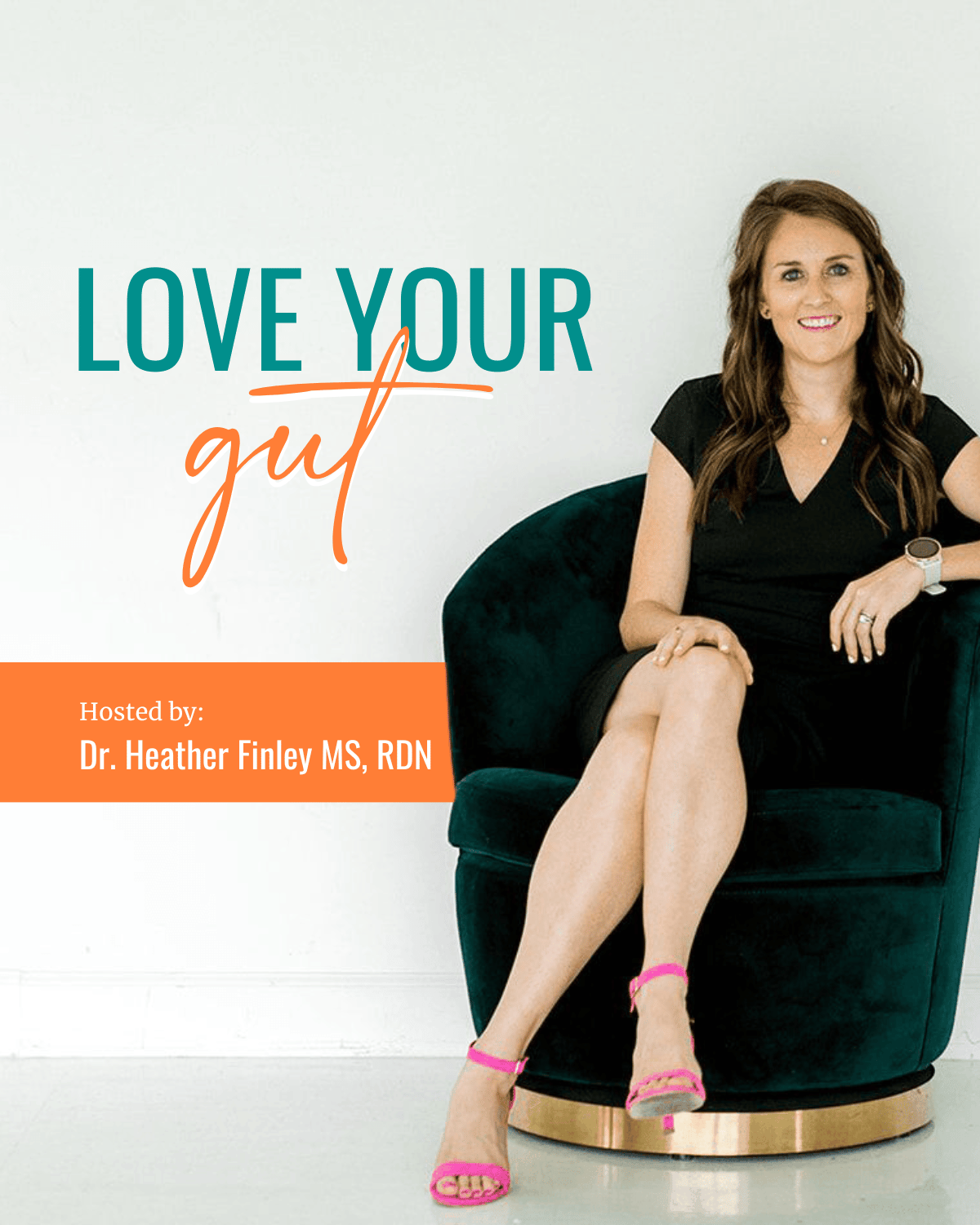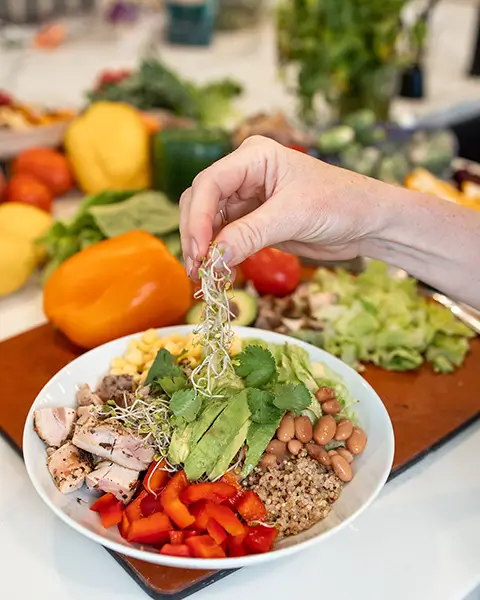You’re bloated. Again.
You’ve doubled your water intake. You added chia seeds to your smoothie. You even bought the fancy fiber supplement your friend swore by.
But by mid-afternoon, your stomach still looks 5 months pregnant — and you’re left wondering what you’re doing wrong.
Fiber and water are often the first things we’re told to reach for when digestion feels off. And while they can help, they’re not magic fixes — especially if there’s something deeper going on. In fact, for some people, loading up on fiber can actually make things worse.
In this post, I’ll walk you through why fiber and water might not be helping your bloating — and what actually does. You’ll learn the real root causes behind stubborn bloating, how to tell if fiber is helping or hurting, and simple steps to start feeling better without piling on more supplements.
The Fiber and Water Myth- Why Fiber and Water Alone Often Backfire
Fiber and water are often the first things we reach for when we’re bloated or backed up. And while they can be part of a healthy digestive routine, they’re not a root cause solution — and for some, they actually make things worse.
Here’s why:
- You’re constipated and have slow motility
If your gut is sluggish, adding more fiber without enough water (and mineral support) is like dumping more cars onto a traffic jam. Fiber needs water to move — and if you’re not hydrating enough or your motility is impaired, it can sit in the gut and make bloating worse. - You have dysbiosis — or “bad bugs” feasting on fiber
Your gut bacteria are responsible for digesting fiber. But if your microbiome is imbalanced (too many gas-producing microbes or not enough of the good ones), fiber can fuel the wrong bacteria and lead to gas, bloating, and discomfort. This is especially true if you’ve ever felt like after eating bread I feel bloated — the issue may not be the bread itself, but how your gut bacteria are reacting to FODMAPs in the bread. - You’re using synthetic fiber supplements
There’s a big difference between natural fiber and synthetic fiber. While whole-food sources of fiber (like fruits, veggies, and seeds) are bundled with nutrients that support digestion, many fiber supplements (like inulin or psyllium) can ferment too quickly, leading to bloating — especially if your gut isn’t ready for them.
The bottom line? If you’re dealing with chronic bloating, simply increasing fiber and water might not be the solution — and could be making your symptoms worse.
10 Signs You Need Fiber (And 5 Signs It’s Making Things Worse)
Let’s be clear: fiber isn’t the villain. For many people, it’s essential for healthy digestion, blood sugar balance, and microbiome support. But knowing when and how much fiber to increase is the real key.
10 Signs You Probably Need More Fiber:
- You’re not having daily bowel movements
Irregularity is a common sign your body needs more fiber to support regular elimination. - Your stools are thin or hard to pass
Fiber adds bulk and structure to stool, making it easier to eliminate. - You’re constantly hungry or never feel full
Fiber helps with satiety and keeps you fuller for longer. - You experience blood sugar crashes
Fiber slows glucose absorption, helping to stabilize energy and reduce that hangry feeling. - You have high cholesterol
Soluble fiber helps bind to cholesterol and excrete it through the stool. - Your diet consistently lacks 30g of fiber per day
Most people are getting far less than the recommended amount. - You’ve been on restrictive diets
Long-term restriction (like low-FODMAP or elimination diets) can starve your beneficial gut bacteria — and fiber helps feed them back to health. - You’ve recently completed antibiotics
Fiber acts as a prebiotic, helping to regrow a healthy microbial population. - Your stool test showed low beneficial bacteria
Fiber is food for your good bugs — especially Bifidobacteria and Akkermansia. - You rely on processed or ultra-low-carb foods
These often lack the natural fibers found in plants, which are crucial for microbial and digestive health.
5 Signs Fiber Might Be Making Things Worse:
- You’re bloated, gassy, or crampy after eating high-fiber foods
This is often a sign of dysbiosis or poor digestion — not that your body hates fiber, but that your gut isn’t ready for it yet. - You have loose stools or diarrhea
Excess fiber, especially from certain synthetic sources, can speed up transit time too much. - Your fiber is coming in one big bolus
Dumping 20g of fiber in one smoothie or salad can overwhelm the gut. Aim for a steady stream throughout the day. - You’re constipated and not drinking enough water
Fiber needs water to work. Without it, fiber can back you up even more. - You see undigested food in your stool or struggle with carbs
This could indicate low enzyme output, not a fiber issue. In this case, digestive enzyme support may be more helpful than fiber alone.
Fiber is powerful — but it needs the right timing, type, and support to work in your favor. In the next section, I’ll walk you through what actually helps with bloating (especially if fiber isn’t cutting it).
So If It’s Not Fiber and Water… What Does Help?
If fiber and water haven’t helped your bloating, you’re not broken — you’re just missing a few steps upstream. Instead of piling on more chia seeds, the real magic happens when you start at the top of digestion and work your way down.
Here’s where to focus:
1. Support the Top of Digestion
- Stomach acid + enzyme support
Without enough stomach acid or enzymes, even “healthy” fibrous foods (like veggies and grains) can ferment in the gut — leading to bloating.
Pro tip: If you see undigested food or fibers in your stool, it’s a sign your digestion isn’t breaking them down properly.
- Chew your food (yes, really)
Digestion starts in the mouth. Chewing stimulates enzymes that help break down carbs — especially fibrous ones. If you’re inhaling meals in 5 minutes, your gut never gets the memo to prep for digestion. - Slow down your meals
Rushed meals = poor digestive signaling. Taking a few deep breaths before eating and sitting down without distractions can make a huge difference.
2. Get Your Bile Flowing
- Bile is essential for breaking down fats and moving stool through the colon.
If your poop is sticky, greasy, or hard to wipe, it could be a sign your bile flow is sluggish — and that can lead to bloating, especially after high-fat meals. - Support bile with:
- Bitter foods (arugula, dandelion, lemon water)
- Targeted bile support (ox bile, digestive bitters, taurine)
- Bitter foods (arugula, dandelion, lemon water)
3. Fix Motility with Minerals
- Sodium, potassium, and magnesium are the unsung heroes of gut motility.
These minerals help your muscles (including your intestines) contract and relax properly — which keeps food moving and prevents buildup. - Signs you may need more mineral support:
- Constipation
- Cramping
- Fatigue
- Feeling “stuck” no matter how clean your diet is
- Constipation
4. Reset Your Gut (Without Overdoing It)
Think of this as your starter list — or “10 ways to reset your gut health”:
- Eat meals at regular times
- Stay hydrated with electrolytes
- Chew thoroughly
- Include bitter foods
- Focus on protein + color at each meal
- Support stomach acid if needed
- Walk after meals
- Avoid snacking all day (give digestion a break)
- Try gentle belly massage or vagus nerve stimulation
- Use gut-supportive supplements strategically (not endlessly)
5. Heal First, Then Add Fiber
If your gut lining is inflamed or your microbiome is imbalanced, fiber can feel like sandpaper.
Focus first on healing the gut lining (with things like L-glutamine, zinc carnosine, or immunoglobulins), and rebuilding your beneficial bacteria before adding high amounts of fiber.
Pro tip: Go low and slow. Start with small amounts of fiber-rich foods and spread them throughout the day instead of front-loading in one meal.
Not All Fiber Is Created Equal
There’s a big difference between natural fiber and synthetic fiber, and understanding that can make or break your gut health strategy.
- Natural fiber comes from whole foods: think veggies, fruits, beans, seeds, and whole grains. These sources don’t just give you fiber; they come with enzymes, water, minerals, and antioxidants that support digestion and microbiome diversity. When possible, this is where the majority of your fiber should come from.
- Synthetic or isolated fiber is found in powders and processed “fiber-enhanced” products. Ingredients like inulin, psyllium husk, or maltodextrin are often added to bars, shakes, or supplements to boost fiber content. While these can be helpful for some, they can ferment too quickly in the gut, especially if you have dysbiosis or a sensitive digestive system leading to more bloating.
That said, a mix of both can work, especially when used strategically. I personally add Bio.me Fiber to my morning coffee because it tastes great and gives me 7 grams of fiber right out of the gate. It’s an easy way to fill in the gaps without overloading my gut all at once.
Just remember: fiber is best added gradually and consistently. The goal isn’t to force-feed your gut 30 grams overnight, it’s to build up tolerance while supporting digestion from top to bottom.
Still Bloated? Here’s When to Dig Deeper
If you’ve tried all the basics: added fiber, drank more water, cleaned up your meals, and you’re still dealing with daily bloating, it might be time to go deeper.
Here are some signs your gut needs more than just diet tweaks:
- You feel worse after eating bread or fiber-rich meals
(And you’re constantly Googling things like “after eating bread I feel bloated”) - Fiber makes your symptoms worse instead of better
Despite your best efforts, it leaves you gassy, crampy, or backed up. - You’re doing “everything right” but your gut still isn’t happy
That’s a sign something deeper is going on under the surface.
At this point, it’s worth looking at:
- Gut testing like the GI Map to assess pathogens, inflammation, and enzyme function
- SIBO breath testing to check for overgrowth
- Mineral testing (HTMA) to assess the electrolytes that keep your digestion moving
Ready to Find Your Root Cause?
Take my 2-minute quiz to uncover what’s really driving your bloating, constipation, or GI symptoms and get a personalized action plan to start feeling better.
👉 Click here to take the quiz and learn what’s keeping your gut stuck.
Because it’s not just about fiber or water. It’s about understanding what your body actually needs to function well.








